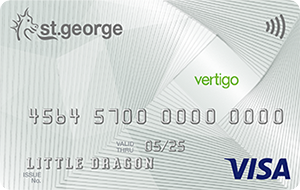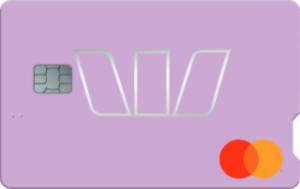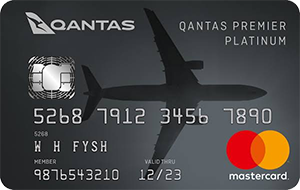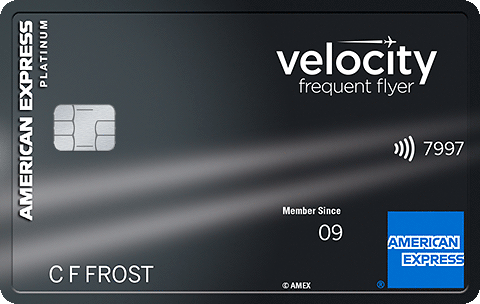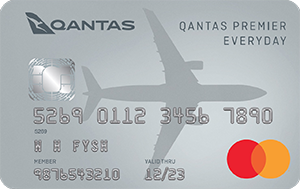
Hi, I’m a personal finance expert who loves to help you out! I’ll answer your question within a business day. Pinky swear.

How many credit cards do you have in your wallet? One? Two? Three, perhaps? What about 35? While it may sound pretty crazy to have 35 credit cards in your name, credit card optimisers consider having credit cards in the double-digits as standard practice.
What is a credit card optimiser exactly? Just as the name suggests, credit card optimisers are people who optimise their credit card use. They keep a number of active credit cards, using each card differently to make the most of what each one offers.
Say you want to earn Qantas Points. And you want to earn rewards on your supermarket shopping. And you want to earn cashback. There isn’t one card that will let you do all of that at once. What’s the solution? You have one card for each task.
You could have one credit card that earns Qantas Points, which you use to cover large purchases and travel spending. You have another card that earns points on supermarket and petrol spending, which you use to cover those purchases. Lastly, you have a credit card that earns cashback on all other spending that you use for everything else.
Doing this means you are using each card to fulfil a need, or in other words, optimising your credit card use. This is essentially what a credit card optimiser does – but they do it on a much larger scale.
So, is credit card optimisation something that could work for you? Making the most of your credit card allows you to take full advantage of everything it has to offer. We’re all for that. But, not everyone has what it takes to manage multiple credit cards at once.
| In this article we’re going to look at the benefits of being a credit card optimiser, discussing the various ways you can make it work for you on both a large and small scale. But, we’ll also look at the downsides of holding multiple cards, helping you to avoid the dangers that come with having potentially too much plastic in your wallet. |

Credit Card Optimisers: The Basics
Let’s start by taking a look at how many credit cards we hold on average here in Australia. Statistics show that within the 18-35 age group, 39.48% of credit card holders have one credit card, 17.59% have two, and 8.36% have three or more.
| Looking at cardholders aged 35-54, 34.70% have one credit card, 26.79% have two, and 20.69% have three or more; while in the 55+ age group, 32.79% have one card, 29.53% have two, and 17.52% have three or more. |
So it seems within each age group, most Aussie cardholders have one or two credit cards in their wallet. Over in the US, however, it’s a different story. According to the 2019 Experian Consumer Credit Review, the average number of credit cards each American cardholder has is four (1).
Interestingly, those who take credit card optimisation to extreme levels seem to live in the US, rather than here in Australia. So, why do Americans tend to carry more cards on average than Aussies? And why is double-digit card use seemingly more prevalent over there?
Two words: annual fees. Over in the States, you can find a huge range of credit cards that charge no annual fees. And, unlike most of the no annual fee cards in Australia that tend to keep things basic, many no annual fee cards in the States offer rewards, cashback, extras and intro offers as standard.
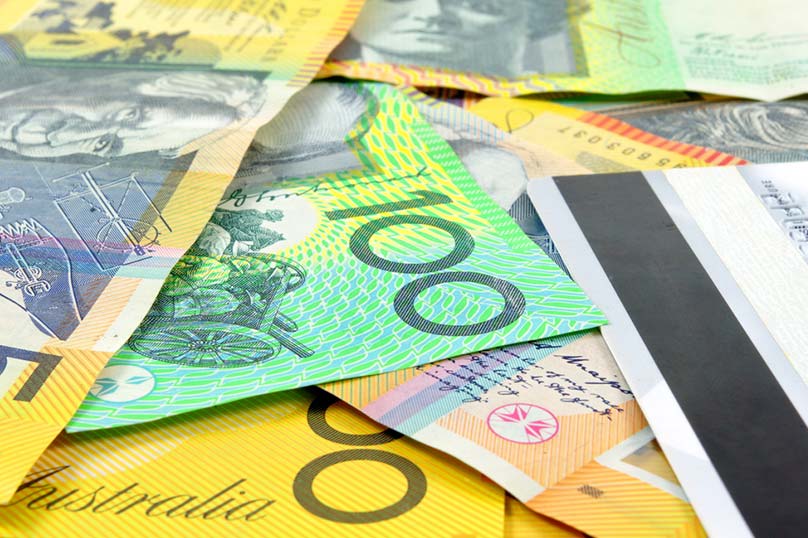
| When you pay no annual fee on your credit card, having multiple cards can make more sense. You make the most of all those lovely extras, while paying out nothing in annual fees. As long as you keep your spending under control and pay off your balance to avoid interest, it’s win-win. |
Here in Australia, it’s somewhat harder to make multiple cards work. On cards that offer rewards, extras and intro offers, we tend to pay more in annual fees. So, we need to make sure we make good use of the extras on offer while channelling enough spending through our cards to make their annual fees worthwhile.
The big question is, does credit card optimisation make sense within the Australian credit card market?
Yes and no. Yes, you could hold multiple cards and make them work for you if you manage them correctly. But, no, it’s unlikely that as an average Aussie spender, you would find the need for double-digit card use.
With that in mind then, what do you need to know?

When should you open a new credit card?
Credit card optimisation, big or small, takes planning and organisation. You not only need to know how to manage your credit cards day-to-day, you also need to understand when to open a new account – and what to look for when you do.
If you are thinking of applying for a new credit card, one of the most important things to think about is what you want to achieve. Perhaps you want to boost your rewards points balance with a bonus offer. Or maybe you’re planning a trip and want some travel perks such as airport lounge access.
| Knowing what you want your new card to do will help you narrow your search as you compare options. You can then look at what each card offers, comparing each one side-by-side according to how it matches your needs. Of course, with its awesome range of credit cards and side-by-side comparison, CreditCard.com.au makes this task oh-so much easier. |
Lastly, look at how much you will pay in annual fees on the new card. This will help you to assess the card’s value in terms of how you will use it. Note, if you want to use the card to earn rewards or make use of extras, make sure the annual fee is lower than the value of the rewards you will earn or extras you will use.
If the card looks like it will work for you, check you meet the eligibility requirements and then apply.

What should you look for in a card?
Credit cards come in all shapes and sizes, designed to suit different types of spending and different cardholder needs. Credit card optimisers take advantage of this by using specific cards for specific uses.
If you want to optimise your credit card use, it’s a good idea to find out what’s out there – and how it could work for you.
Travel Credit Cards
These credit cards focus on travel perks. Using this type of card could allow you to earn frequent flyer points on your spending, while also taking advantage of travel-related extras such as travel insurance, airport lounge access, hotel stays and travel credit.
| Make It Work: Choose a card that earns points on the frequent flyer program you want, making sure you can maximise your points earn with your expected type of spending. Read the small print on the extras to make sure they offer good value to you. |
Rewards Credit Cards
These credit cards offer rewards points earning on certain types of spending. Using this type of card could let you earn points to spend at department stores such as David Jones, or supermarkets such as Coles and Woolies.
| Make It Work: Think about the type of rewards you want to earn, and the type of spending you will do most. Choose the level of card – basic, platinum or black – that best rewards your spending, while keeping in mind the annual fee you will pay out. |
Cashback Credit Cards
These credit cards earn cashback on spending. Offering a flexible way to earn rewards, these cards allow you to earn cashback as a percentage of your spending. The amount of cashback you earn may be limited to a total spend per month or per year – but, unlike traditional rewards, cashback can be spent in any way you choose.
| Make It Work: Choose a card that offers the biggest cashback return for your spending. Think about limits, and how much you are paying out in annual fees to earn that cash back in your pocket. |
Purchase Offer Credit Cards
These credit cards offer a lower rate of interest on purchases over an introductory period. Using this type of card could help you save on interest, and can come in especially handy on larger purchases such as holidays and home renovations.
| Make It Work: Choose a card with the lowest purchase rate offered over the longest period of time. Plan your spending, and make a budget to pay it all back before the intro period ends. |
Balance Transfer Credit Cards
These credit cards offer a lower rate on balances transferred from other credit cards for an introductory period. Using this type of card lets you transfer a balance from another card, to then pay less in interest as you work on paying it all off.
|
Make It Work: Make a plan to pay off a specific amount each month to ensure you clear your transferred balance before it starts attracting interest. Avoid using balance transfer cards repeatedly, as this will keep you in a cycle of debt as you transfer your balance from one card to another without ever paying it off.
TIP: If you regularly need a balance transfer card to pay off your existing credit card debts, holding multiple cards may not be right for you. The key to making multiple cards work is managing them correctly, which means avoiding overspending on them to the point that you cannot pay them off each month. |

Which extras are worth having?
Aside from matching your needs to the basic type of cards out there, you should also keep in mind the various extras on offer. These features are designed to make cards more appealing to cardholders, and can offer extra value as long as you understand how they work – and how to make the most of them.
Better Earn Rates
Over recent years, earn rates on the whole have decreased, making it more difficult for cardholders to see value on the rewards they earn. But that doesn’t mean you shouldn’t seek out value to get more from your rewards card. Check out rewards cards earn rates on offer now, and see how they compare to the rewards you are currently earning. Applying for a new card with a higher earn rate could boost your points earning day-to-day.
Bonus Points
Card providers want your business, which is why you will often see them offering intro offers to new customers. Intro bonus point offers can provide serious value, with hundreds of thousands of points offered to those eligible to sign up. While these offers can be tempting, think about how much you will pay in annual fees (if you plan on keeping the card long-term), and how much you will have to spend during the intro period to be eligible for the points bonus.
0% Interest Periods
Another popular intro offer allows you to pay no interest throughout the intro period. As long as you keep your spending in check, this type of offer could help you save big on interest on spending large and small.
Travel Credit
Travel credit is generally offered on higher end credit cards, as it helps balance out their typically high annual fee. Travel credit could come in the form of complimentary flights, airline credit or hotel stays, creating value for cardholders who tend to travel frequently. You may find that there are certain conditions that apply here, so read the small print carefully.
Travel Perks
Another handy extra for the frequent traveller, travel perks can include travel insurance, airport lounge access, hotel perks and car rental upgrades. Again, these usually come with certain conditions. Reading the fine print can help you understand them better, to then make the most of them.

What’s the best way to manage multiple cards?
When you look at successful credit card optimisers – especially those with 30+ credit cards on the go at once – the first thing you will notice is the time they put into management and organisation.
When you have that many cards in play, not only do you need to make sure each card is used correctly to get the most out of it, you also need to keep on top of each card’s payment date, small print requirements, and important stuff like intro offer end dates.
Managing multiple cards to make the most of what each one offers requires dedication and practise. But, once you get the hang of it, the rewards are yours for the taking.
Card Labelling
As each card has a purpose, it may need to be used on a certain type of spending to allow it to reach its full potential. Labelling each card can make it easier to choose the right card at the checkout for both you and your partner.
Spreadsheets
While there are apps that could help with this, you may decide to go old school and create a spreadsheet that helps you track all the need-to-know info on each card. This could include balances, payment due dates, annual fee due dates, intro offer info and small print requirements.
Reward Trackers
Handy rewards trackers such as AwardWallet can help cardholders track rewards for credit cards, hotel and airline loyalty programs and other memberships. Unfortunately, AwardWallet is only available on the US market, so we may need to wait a while for that kind of assistance here in Australia.
Balance Management
For the most part, managing multiple cards effectively means clearing your balance in full each month. If you carry a balance on multiple cards, you not only pay more in interest making each card less valuable, it also increases your chances of getting in over your head. Of course, there are exceptions to this rule, for example, if you are taking advantage of a 0% purchase offer.
Payment Management
First up, change your bill due dates to suit you. This could mean staggering due dates through the month, having them all on one date, or adjusting them to coincide with your payday. Set up reminders so you know when each bill is due, or set up automatic payments so all you have to worry about is making sure you have enough money in your account to cover them.
Obligations
To take advantage of features or offers, you may need to meet certain obligations. For example, to be eligible for a bonus points offer, you may need to spend a specific amount on the card within a particular period of time. Keep track of these obligations to make the most of what’s on offer.
Dedication
While it would obviously take much more time and dedication to manage 20 or 30 credit cards, you should still be willing to put the time in to manage your much smaller collection of cards. This will not only help you keep on top of your cards, it will help you make the most of them, while also keeping an eye out for what else is out there.

What downsides or dangers should you be aware of?
Credit cards are not for everyone. Even if you just have one credit card, if you mismanage it or overspend on it, you are likely to end up in trouble. Obviously, with multiple cards, those risks multiply. So, what should you be aware of before expanding your card collection?
Cost in Fees
From annual fees to late fees, Aussies pay about $1.5 billion in fees each year on their credit cards (2). If you want to make your credit cards work for you, you need to avoid all unnecessary fees, while making sure the annual fee you pay out is less than the value of features you get in return.
Management
Managing multiple cards takes time. You need to make sure each card is paid off on time each month, and you need to understand how each card works in order to make the most of it. If you don’t have the time or the organisation skills to do this, you may find the task too much to handle.
Temptation to Spend
With just one credit card, you can only spend up to its limit. With multiple cards, that limit becomes much higher. If you have trouble stopping yourself from overspending, having a much higher total credit limit could lead you into unmanageable levels of debt.
Higher Spend Requirements
Whether it’s a rewards card or a bonus points offer, you will need to spend to either make the card worth having, or to meet eligibility requirements. If you don’t have the funds to pay off that spending, you may end up paying more in interest, or you could end up spiralling into debt.
Temptation to Apply
Checking out credit cards, it’s easy to get carried away. You like the look of those extras so you apply for that card. You fancy getting those bonus points so you sign up. Having multiple cards means being disciplined – and only applying for cards that serve a purpose, while giving more back than you pay out to keep them.
Eligibility
High end cards typically have higher eligibility requirements. You will need to earn a certain amount to be approved. Also, in terms of offers, you will need to be a ‘new’ cardholder. If you have a number of different cards, you may find yourself ineligible for certain offers as an existing cardholder. Planning and research is key if you want to avoid this and make the most of new offers.
Credit Score
As long as you manage your cards effectively, clearing your balance each month and making all payments on time, your credit file should see positive improvement. However, if you struggle to keep on top of your cards, missing payments and going over your credit limit, your credit score will take a hit.
Credit Utilisation
When you apply for credit, your credit provider will look at a number of factors, including your credit utilisation. This is basically the amount you owe in relation to your credit limit. In some cases, a low credit utilisation rate is good, as it means you don’t have too much debt. In other cases, even if you owe a minimal amount, having a higher available credit limit (as you do with multiple cards), can mean you are higher risk. This can affect whether your application is approved.
Credit Enquiries
Also noted on your credit file is the number of credit enquiries you make. If all your enquiries result in approvals, that’s great. But, if you have a number of declined credit enquiries, that will be recorded on your credit file, making you seem more of a risk.

How do you know when to close cards down?
While a large part of being a credit card optimiser involves knowing when to open a new card account, successfully managing multiple cards also means understanding when to close cards down.
If you are effective at managing your cards, you should be able to tell when a card stops being useful. Perhaps it’s no longer earning rewards or offering valuable extras as it used to. Maybe you have changed the way you are spending, or you only wanted the card for its intro offer.
Whatever the reason, you should always keep a close eye on each card to make sure it continues to offer value, providing the features you need, as your spending patterns change over time.
Before you close a card, be sure to take into account how long you have had the card, and how closing it could affect your credit utilisation rate and your credit file. Also make sure the account is paid in full, and that you close it correctly according to your card provider’s requirements.

What should you think about before you apply?
Think the life of a credit card optimiser could be for you? As we have seen, there are benefits and drawbacks to having multiple credit cards. But, if you manage your situation correctly, you should be able to maximise the benefits and minimise the drawbacks.
With that in mind, here are some things to think about before you start expanding your collection of cards.
Review potential life changesThinking about changing jobs? Starting a family? Buying a house? These life changes could affect how much time you have to manage multiple cards, as well as your ability to repay them. Consider the possibilities and choose wisely. Check your credit scoreBefore you apply for a credit card, you should always check your credit. You can do this for free, and it should give you a good idea of where you stand in terms of eligibility for different types of cards. It could also provide valuable info, such as telling you that you should spend more time improving your current situation before you think about applying for more credit. Check your eligibilityMost cards have certain eligibility requirements, and it’s important to make sure you meet them in order to avoid black marks on your credit file. If you’re unsure what the requirements are, contact the card provider before you apply. |
Time to check out your options? You’re in the right place. Whether you’re scoping for bonus points intro offers or a rewards card that actually rewards you, you can compare your options side-by-side using the easy-to-use comparison tools on CreditCard.com.au. You’ll be optimising those credit cards in no time!
Sources
1. https://www.cnbc.com/select/how-many-credit-cards-does-the-average-american-have/
2. https://www.abc.net.au/news/2019-09-11/how-to-get-out-of-credit-card-debt-and-the-rise-of-p2p-lending/11474418
3. Photo source: Shutterstock

Pauline Hatch
Pauline is a personal finance expert at CreditCard.com.au, with 9 years in money, budgeting and property reporting under her belt. Pauline is passionate about seeing Aussies win by making their money – and their credit cards – work smarter, harder and bigger.
You might be interested in

Credit Card Types
Credit Card Fraud Statistics

Tips & Guides
Complete Guide to the Velocity Frequent Flyer Program
Recently Asked Questions
Something you need to know about this card? Ask our credit card expert a question.
Ask a question
Hi, I’m a personal finance expert who loves to help you out! I’ll answer your question within a business day. Pinky swear.


